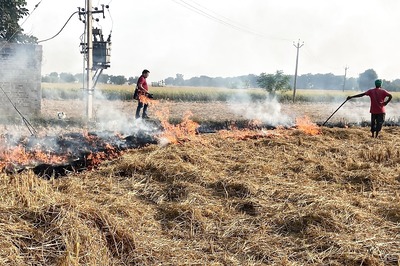
views
Amid yet another Covid wave wreaking havoc in China, the central government has revived certain precautionary guidelines in India. The state public health data shows that at least seven sub-variants of Omicron were circulating in Tamil Nadu over the past 11 months. These were all identified as ‘variants of concern’ by the World Health Organization.
According to data compiled by the Tamil Nadu Directorate of Public Health, one of the first sub-variants to be detected in the state was BA.1.1, which recorded a spread of 48 percent by January. Another subvariant BA.2 recorded 21 percent spread. When BA.2 globally supplanted BA.1 in February, the same pattern was repeated in Tamil Nadu.
With 83 percent of the cases in the state being identified as BA.2 in February, this subvariant became dominant. At the same time, the percentage of BA.1.1, which was higher in the previous months, was discovered to be only 3 percent.
In February, March and April, BA.2 remained dominant in the state as it was more transmissible than BA.1. It triggered the third wave in the state and the trend continued, with BA.2 recording 84 percent spread in March and 76 percent in April.
Sub-variants with very low prevalence, such as BA.1.1 (2 percent), and BA.3 (3 percent), were detected in March and April.
By May, the pattern started to change as BA.2 started losing its virulence (or transmissibility), with the stake being reduced to 35 percent. Omicron’s other subvariant, BA.2.38, had spread to 34 percent of the state.
The BA.5 variant, which had only spread 4 percent in May, took over in June, July and August before continuing to exist in September, October and November. The prevalence of BA.5 was 47 percent in June, 77.8 percent in July, and 66.3 percent in August.
Additionally, there was another variant, BA.2.3, which spread up to 23 percent in June, and a BA.2 variant that spread up to 19 percent. The prevalence rates of the Covid variants in July were interesting: BA.2.38 at 5.1 percent, BA.2 at 4.9 percent, and BA.2.75 at 4.2 percent. In August, the prevalence of BA.2 was 4.6 percent and that of BA.2.75 was 19.1 percent.
Beginning in September, the current dominant version, XBB, began steadily displacing other variants. The prevalence of XBB was 3.6 percent in September before it rose to 52.4 percent in October and 78.6 percent in November. The XBB continues to be the dominant variant.
The increase in cases in China is attributed to BF.7, a sub-lineage of BA.5. Even though XBB is the most common in Tamil Nadu now, BA.5 is still present but occurs less frequently. The prevalence of BA.5 was 10.1 percent in September, 3.5 percent in October, and marked a slight increase with 6.2 percent in November. The whole genome sequencing of samples collected from December is yet to be completed.
With projections and observations from experts watching the changing trends, all prior samples of BA.5 are being resequenced to look for BF.7, a sub-lineage of BA.5, which is still not dominant in Tamil Nadu.
Read all the Latest India News here




















Comments
0 comment